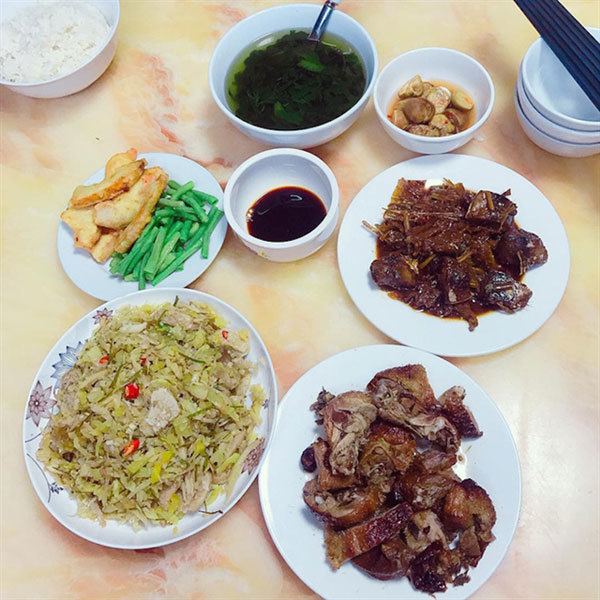For northerners, fermented pickles are part and parcel of daily meals, but for locals in central provinces, particularly Nghe An, nhút (pickle made from young jackfruit) is a real specialty.

Nhút is a must-have dish in daily meals. — Photo baonghean.com
Ho Thi Nguyet from the rural district of Thanh Chuong said most households in the province know how to make nhút but the most delicious came from her district.
Asked why it is called nhút, Nguyet said it meant jackfruit and Thanh Chuong was famous for its fragrant jackfruit.
In the past due to the barren land with white sand and hot winds sweeping in from Laos (locally known as the dry hot wind from Laos), locals often went hungry for at least several months of the year. To alleviate their hunger, they boiled young jackfruit to dip in chẹo (a unique sauce made from soy sauce and peanuts) to eat instead of rice.
“But jackfruit is only available in the summer so housewives fermented it to be eaten year-round. Since then nhút has been a popular dish which reminds locals of when they were facing a very hard time,” said Nguyet.
Asked how to make nhút, Nguyet said when the jackfruit season arrives, most women in her district are excited.
Ingredients include salt, ginger leaves, chilli, cane, water and galangal.
“I choose young jackfruit with seeds that are not covered to make the nhút tastier,” said Nguyet, noting that after peeling off the skin, she cuts the inside into threads and soaks them in stock for two hours until the threads turn white and then dries them in the sun for several hours before mixing with salt.
The last stage is to put 2-3 sugarcane chunks in the bottom of the jar before adding the nhút, chili, ginger leaves and galangal root then pouring cooled boiled water into the jar.
“I often use a bamboo frame to press these ingredients to stop them from turning black,” said Nguyet, adding that the fermented nhút should be soaked for 5-6 days.
Apart from the young jackfruit flesh, Nguyet said she also uses the fruit’s fibres locally known as xơ mít to make nhút but they take two days to ferment.
Nguyet said the most enjoyable way is to eat nhút is with mint and chẹo sauce.
“You will experience the flavours of soy sauce, peppery chilli, sweet sugarcane and buttery roasted peanuts.
Nhút can be mixed with boiled bacon, roasted peanuts and mint to make a salad, or it can be fried with pig ears or pork fillets with added chili to eat with hot rice during the winter, Nguyet said, noting she often cooks nhút with tomato and fish to eat in the summer. “It helps to reduce body heat a lot.”
Although we live in Hanoi we usually have the chance to enjoy the original Thanh Chuong nhút because we are related to Nguyet, and she sends us a dozen jars every year.
Ta Thanh Binh, who is a native of Nghe An, said she likes eating nhút very much. She said she often ordered nhút from Thanh Chuong to send to her friends in Europe. “My friends told me they miss the dish so much.”
“We always have a jar of nhút at home for daily meals. It helps to give us a good appetite every day, and much more important is it's also good for the digestion,” Binh said, noting that she also uses nhút to make sour soup.
Ingredients include fermented jackfruit fibre (one bowl), three dried shallots and fresh onions, cilantro, spices, pepper, and chilli. The dish is most enjoyable with fresh fish.
“All six of my family members agree that the dish is really good for summer. They also call it a specialty. It reminds us of our native land in Nghe An,” Binh said.